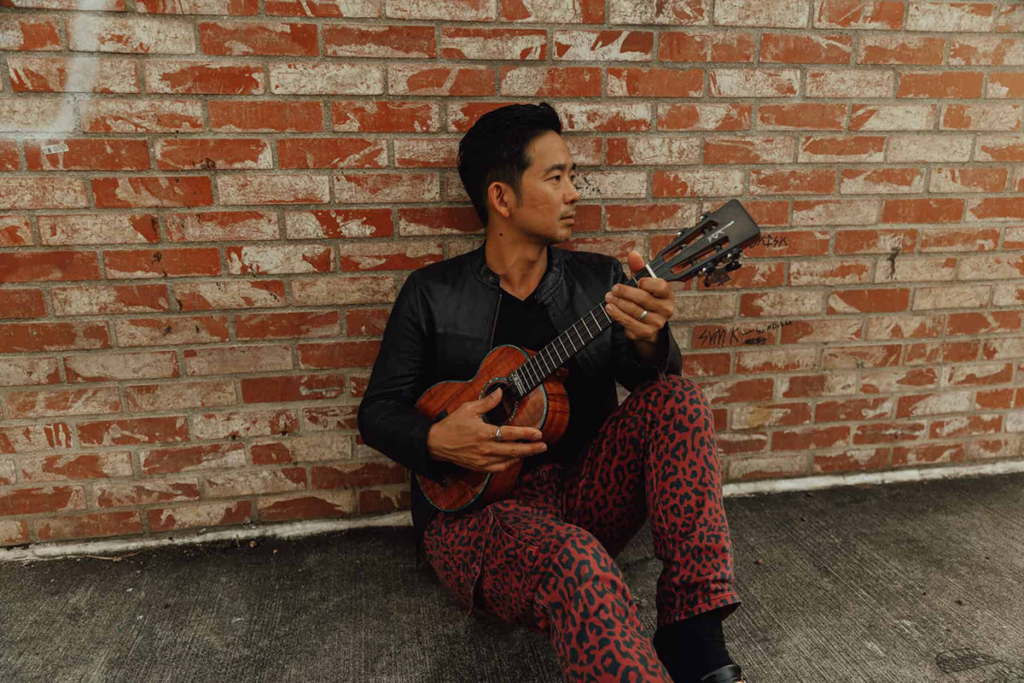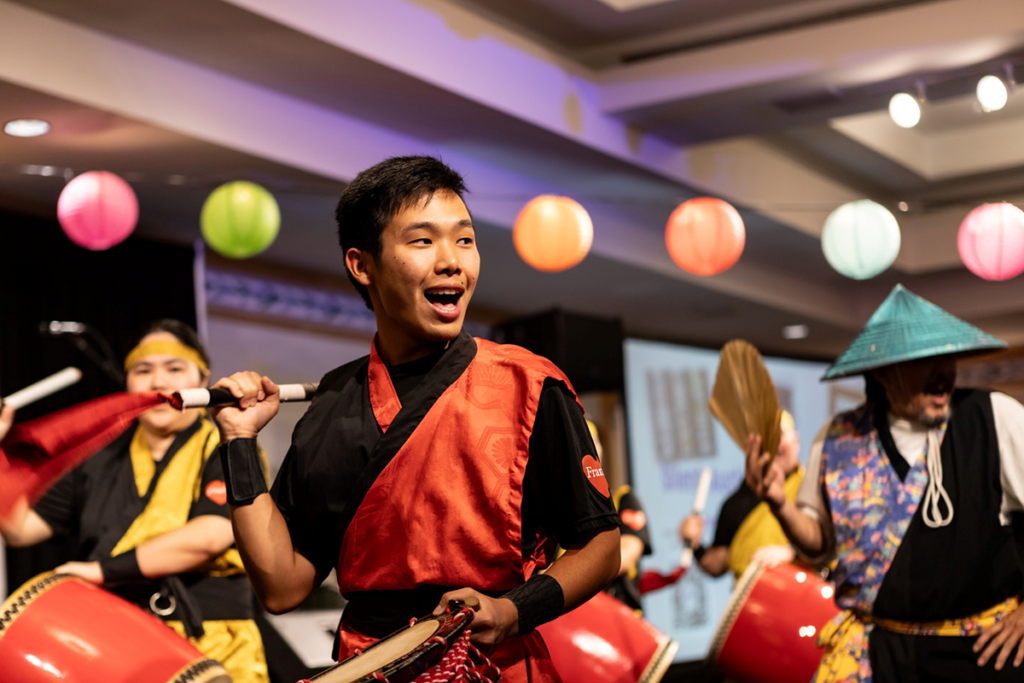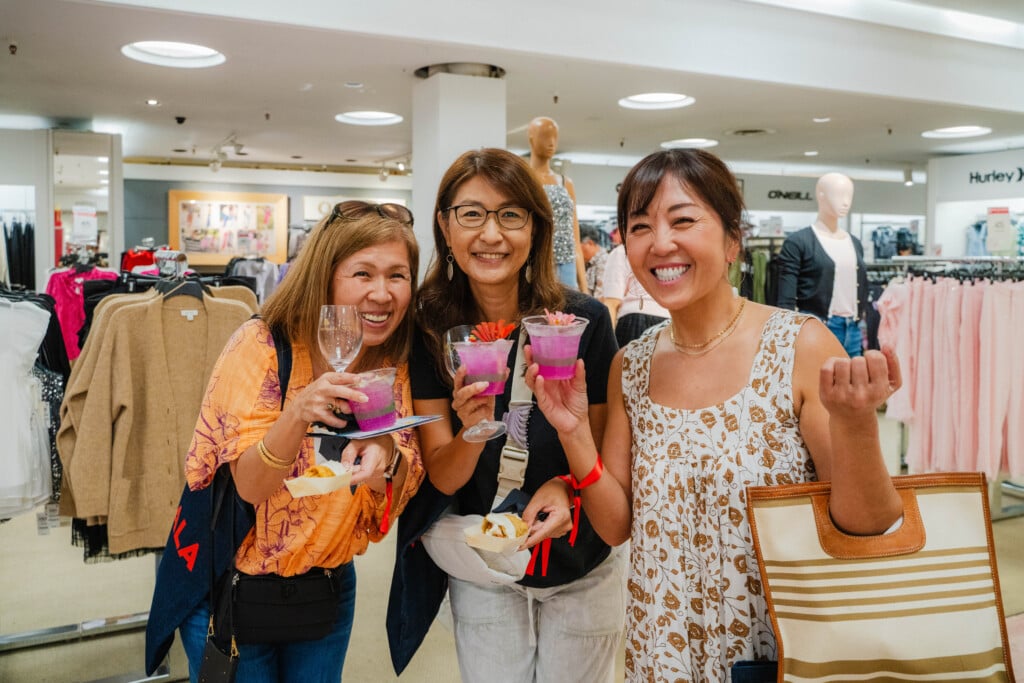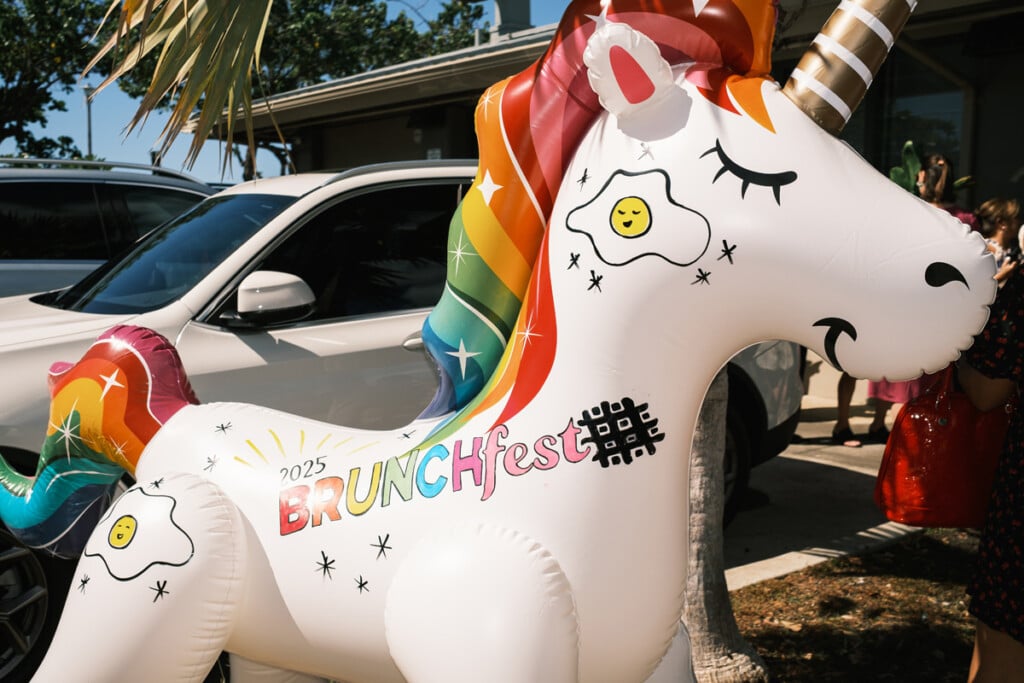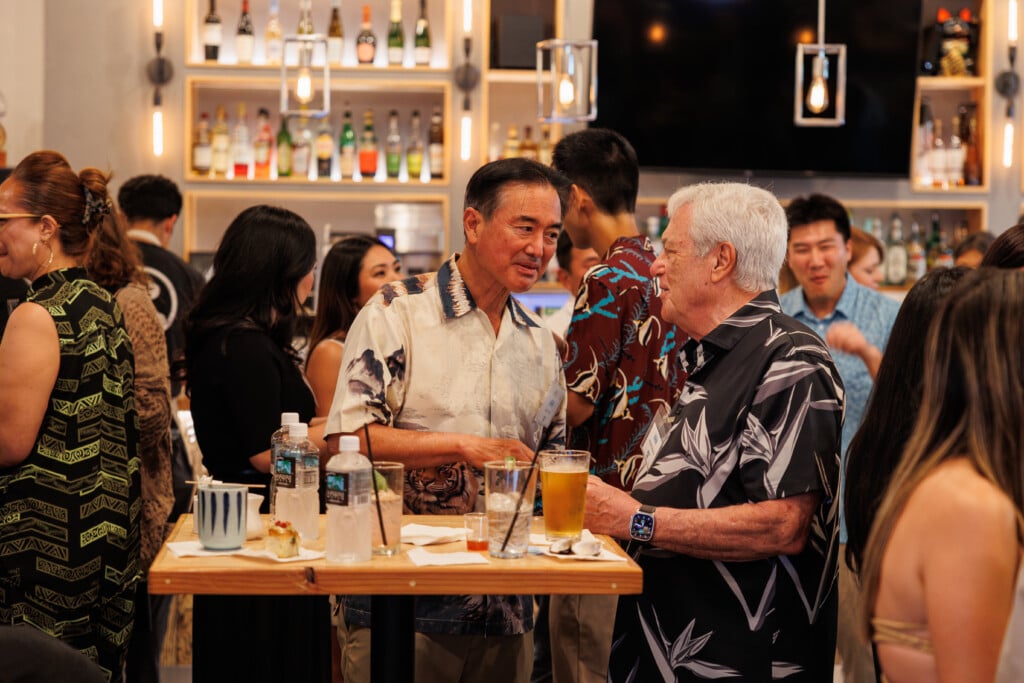Herb Kane: The Last Interview
Just months ago, we had the opportunity to talk with Herb Kane, as powerful an artist as Hawaii has ever produced. We had no idea at the time that the world would soon lose him.
|
I had always wanted to meet Herb Kawainui Kane. Kane, who died in March at age 82, was one of the principal figures of the Hawaiian Renaissance, that resurgence of Hawaiian culture that began in the 1970s and culminated in the rebirth of hula, the Hawaiian language, traditional Hawaiian music, Hawaiian voyaging canoes, and a growing sense of Hawaiian social and political identity.
Kane was a Hawaiian Renaissance man, in both senses of the term. When the history of that period is written, he will rank with Eddie Aikau, Gabby Pahinui and Eddie Kamae as one of the prime catalysts of the Hawaiian Renaissance.
He was also a Renaissance man in the more conventional sense of the term.
He was an author and historian, a founder of the Polynesian Voyaging Society, the designer of the Hokulea and its first skipper. Those were things he managed to do on the side, because, above all, he was a painter of vast, sweeping, detailed and colorful renditions of Hawaiian history and legend.
What did ancient Hawaii look like? If we visualize it at all, it’s because of Kane’s meticulous research and his skills with a paint brush.
|
|
Four months before his death, I was planning a trip to the Big Island with photographer David Croxford, primarily to document the traces of Hawaiian history that linger, still alive, just under the touristy surface of the South Kona Coast.
Hawaiian history? South Kona Coast? I decided we had to, absolutely had to, stop and spend a couple of hours with Herb Kane.
We didn’t really need to interview Kane for the story we were working on. It was largely a personal imperative: I just wanted to meet him, would never forgive myself if I blew this opportunity to be in his company, perhaps absorb some small bit of his mana.
I emailed him before we arrived. He replied, “I’ve got a rush job that will take every spare daylight hour for the next two months and have cancelled everything else, but I would like to meet you after all these years.”
We had, in the manner of people who live on different islands, only a telephone and email relationship. We’d talked every now and again, most extensively in 2007.
Thieves had stolen a mural of ancient Punaluu he’d painted for a history center near the Punaluu Black Sand Beach. At one point a tsunami had devastated the center, and it closed, but the mural survived in the vacant building, miraculously untouched.
In the largest art theft of the year, at least in size, thieves with power saws cut the 24-foot-long, 10-foot-high mural into five pieces and removed it. For what purpose, and where they put it, remains unknown.
I loved Kane’s response. He went into his studio and repainted the scene on a 7-foot canvas, improving and refining it. “Now all the thieves have is a preliminary sketch,” he said with a chuckle. “Vengeance is mine.”
I was not sure those phone conversations constituted a real claim on a busy, elderly artist’s time, but Kane was a gracious man: “Come at 9 a.m. That gives us decent morning light before Pele’s smog moves in from the sea on the day breeze.”
|
At 9 a.m., we found the barely marked turn off Mamalahoa Highway, bumped up the road through Kane’s 8.5-acre avocado orchard, and circled the banyan drive in front of his house.
Kane was frail, still bothered from hip surgery, but, at 82, he seemed vibrantly alive, glad to have company.
We intended to talk to him about his career, but he was not a man to rush, to interrogate. He was a man to listen to.
As we sat in his sunny, wood-paneled living room, with coffee and blueberry muffins, he began, appropriately enough for Hawaii, talking about a sense of place.
From his lanai you could survey Kealakekua Bay, where Capt. James Cook died in a skirmish with Hawaiians over a missing longboat. Kane spent many years trying to get historians to accurately describe what happened.
“They’d say the Hawaiians sacrificed him when they realized he wasn’t the god Lono. They knew he wasn’t a god, they received him as an honored chief.”
The skirmish, Kane said, was the result of earlier sacrileges committed by Cook’s crew and Cook’s own increasingly bad temper, the result perhaps of a vitamin deficiency.
It was a bright day and, as Kane had predicted, the Big Island vog had not yet covered the coast. You could see all the way down to Puuhonua o Honaunau, the City of Refuge. “Right there,” says Kane, pointing in the general direction of Keei, “was where Kamehameha fought his great battle, his Gettysburg.”
Like most people, I’d always thought that Kamehameha’s Gettysburg was the Battle of Nuuanu—a battle Kane vividly recreated in his well-known 1976 painting, with Kamehameha’s disciplined warriors using their long lances to drive the defeated defenders of Oahu over the edge of the 1,000-foot Pali. That battle secured Kamehameha’s conquest of the Islands.
“No,” says Kane gently, not even noting my ignorance except as a chance to talk about something that interested him: “Kamehameha’s first great battle was for control of the Big Island, the Battle of Mokuohai, against his cousin.”
Kane retold the story. Kamehameha, not yet a king, but a popular chief, was locked in conflict with his cousin Kiwalao. There was an exchange of insults and aggression, alliances and counter alliances, a final, three-day battle that raged on land and sea. At the end, Kamehameha’s chief of staff, Keeaumoku, wounded, crawled to dispatch a wounded Kiwalao with a shark-tooth leimono.
“You can be sure that some of those defeated warriors made straight for the refuge of Puuhonua o Honaunau,” says Kane.
It looks like a long way to run, I say.
Kane just smiled. “They were Hawaiian,” he says. “They swam across the bay.” He traced the line with a finger.
The bay, the landscape, all seemed to have become part of Kane. For him, its history seemed as alive as the ti leaves in his garden.
“The more you learn about the history, the deeper you want to go,” he says. “It pulls you in.”
Remarkably, Kane himself had almost escaped Hawaii’s pull.
|
He was born, not on the Big Island, but in the small Midwestern town of Marshfield, Minn.
“My father grew up in Waipio Valley,” he says. “He had a map of the United States, and he decided he would see all 48 states. There were only 48 then. He ended up in Detroit, and worked at the Ford Motor Co. long enough to become an auto mechanic, and he’d go from town to town, working that trade.”
One of those towns was Marshfield. There Herb Kane the elder met and married a farmer’s daughter, Dorothy Hansen. Their son split his childhood between Marshfield and the Big Island.
“I lived in both worlds,” he says, recalling trips to Hilo, learning to sail, fishing for aama crabs, shivering in a boat off Kona when the cold land breeze came off Mauna Kea.
Although he didn’t quite want to say so, Marshfield was essentially his home. That’s where he delivered newspapers in the chill Midwestern winters and sold suits to farmers in the town’s clothing store.
The Midwest almost claimed him, another Hawaiian lost to the diaspora. After a stint in the Navy, he earned a masters’ at the Art Institute of Chicago (which gave him an honorary doctorate in 2008), and settled into a 14-year career as an illustrator and advertising artist. “Anything to keep the brush moving,” as he put it.
It was the Hawaiian sailing canoe that brought him back.
Still in Chicago, doing illustrations of the Jolly Green Giant for commercial clients, he sailed his racing catamaran in Lake Michigan. He became fascinated—“obsessed, really,” he says—with the canoes of Hawaii and Polynesia, researching and doing 14 detailed paintings.
In 1969, Alfred Preis, the architect of the Arizona Memorial and the first executive director of the Hawaii State Foundation of Culture and the Arts, saw them and bought them all.
“That purchase enabled me to move back,” says Kane. “I immediately started proselytizing about building a replica of a Hawaiian voyaging canoe.”
Through his research, Kane had become convinced that the canoe was the “central technology” of the Pacific, that the Polynesians were capable of long sea voyages.
“That notion at the time was controversial,” says Kane. It wasn’t even that; scholarly opinion tended to dismiss it entirely.
In 1973, with Ben Finney, Kane founded the Polynesian Voyaging Society. “It was an experiment, because we didn’t know if it was possible to build a replica or sail it, didn’t know yet the navigation system.”
Kane designed and helped build Hokulea. He was its first skipper from 1973 to 1975, taking the canoe on shakedown cruises around the Islands. “It got a tremendous response among Hawaiians wherever we sailed,” he recalls.
|
Kane is shown with his wife, Deon.Photo: David Croxford |
Hokulea has since logged more than 100,000 miles across the open ocean. It wasn’t just a proof of concept; Hokulea become the central symbol of the Hawaiian Renaissance.
“It succeeded beyond my hopes,” says Kane. “Not just the canoe, but the whole culture that grew up around it. I think there are 56 songs about Hokulea.”
At the same time, Hawaiian culture became the driving force behind his paint brush. His career as a painter of Hawaiian antiquity took off, as well as a career as an architectural designer of resorts and history centers.
His achievements in Hawaii are so well known we didn’t much talk about them: three illustrated books: Pele, Goddess of Hawaii’s Volcanoes (1987), Voyagers (1991), Ancient Hawaii (1998); seven U.S. postage stamps, including the stamp commemorating 50 years of Hawaii’s statehood in 2009; a stream of paintings that seldom saw an art gallery because they were purchased before they were finished in Kane’s studio.
The night before, we had seen a new, highly respectful, koa-framed exhibition of 40 of Kane’s prints. It stretched down a long hallway in the lobby of the Kailua-Kona’s King Kamehameha Hotel, and was so powerful in its cumulative impact that you seemed to breathe the same air as Kamehameha, who, after all, had retired to a shoreside hale about 100 yards away.
Kane had a copy of one print on his own wall, of Cook sailing for the first time into Kealakekua Bay, surrounded by canoes of Hawaiians. Kane had, of course, studied canoes for decades, and obtained admiralty drawings and historic accounts of Cook’s ships. You took it for granted that every line on the sailing ships, every lashing on the canoes, was as accurate as Kane could make it.
What struck me this time, however, were the faces. They were all different, expressive. “The ships are from history,” says Kane. “The faces are from life. They are friends, neighbors, people I know. You need life in a painting.”
We toured his studio, though he wouldn’t let us take his picture with the large canvas he was working on, saying, “Not till it’s finished.”
He then took us room to room in his small, but beautifully appointed house, including the annex he’d built for his wife, Deon, and the garden, with ingenious floating sculpture of Pele’s sister, Namaka, made largely of Styrofoam, though it looked like stone.
When Kane died, his website was filled with dozens of tributes, from as far away as Switzerland:
“A great man.”
“A fantastic visionary who enjoyed the fruits of his visions within his lifetime.”
“He has set the bar for excellence for all artists in Hawaii that strive to depict Hawaiian culture accurately and with integrity.”
“A true Renaissance man in the footsteps of Leonardo da Vinci and Michelangelo: a man who was ahead of his peers, who excelled at many things.”
“You were a mighty man, Herb Kane, and one of the gentlest of souls who walked these plains.”
That sunny morning in Kona, he seemed so alive and full of spirit that we gave no thought to losing him.
As he walked us to our rental car, all we said was, “Goodbye. Thank you for everything.”
For more information on Herb Kane’s artwork or to purchase a print, visit herbkanestudio.com.







